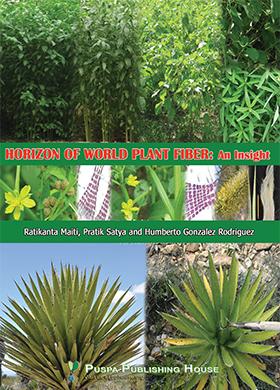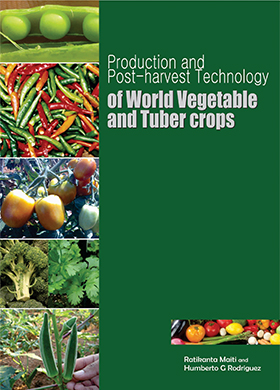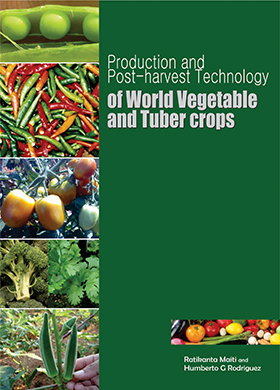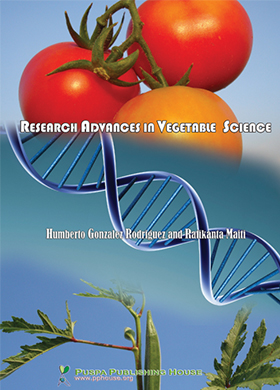Full Research
Diversity and Management of Useful Homegardens Plant Species in Arba Minch Town, Southern Ethiopia: Implication for Plant Diversity Conservation and Food Security
Mulugeta Kebebew
- Page No: 137 - 148
- Published online: 28 Aug 2018
- DOI: HTTPS://DOI.ORG/10.23910/IJEP/2018.5.3.0260
-
Abstract
-
mulugetakebebew1@gmail.com
Homegardens host a significant portion of plant biodiversity and played an important role towards the development of early agriculture and domestication of crops and fruit trees, a still ongoing process. The study was conducted on homegardens of Arba Minch town, Southern Ethiopia with the aim of documenting the indigenous knowledge on categorization, use and management of useful plants species in homegardens. A random sample of 100 homegardens from four sub-cities of Arba Minch town was used to collect useful plant species data. Techniques used were focus group discussion, semi-structured interviews, home garden tour and free listing. A total of 138 useful plant species were documented, of which 12.36% were edible plants, 11.90% income source plants, and 8.92% shade plants. Fabaceae was the dominant family represented by 17 species, followed by Euphorbiaceae with 10 species and Asteraceae and Poaceae with 6 species each. Homegarden size of the study area ranged from 220 to 1235 m2 with an average size of 727.5 m2. The age of homegarden is ranged from 10 years old to 50 years old with an average age of 30. The number of species in the homegarden ranges from 10 to 45 with the average of 27.5. The study indicates that homegardens are contributing to food security, income generation and livelihoods in Arba Minch town through production of ornamental, food plants, fodder, medicinal, timber and construction. The study recommended that the management of useful plant species in homegardens will be scaled up and further expanded and assisted by agricultural extensions in urban areas in Ethiopia.
Keywords : Plant species diversity, home garden, indigenous knowledge, conservation
-
Introduction
Homegardens are commonly defined as a piece of land with a definite boundary surrounding a homestead, being cultivated with a diverse mixture of perennial and annual plant species, arranged in a multilayered vertical structure, often in combination with raising livestock, and managed mainly by household members for subsistence production (Vorgelegt Von, 2007). They are one of the most complex and diverse agro-ecosystems worldwide and played an important role towards the development of early agriculture and domestication of crops and fruit trees, a still ongoing process (Abdoellah et al., 2006).
Homegardening has proven to be an effective approach to improved household food security. In many parts of the world homegarden systems provide supplementary food, fuel, fodder and serve as a recovery area for the people (Gebauer, 2005, Reta, 2016). The production of vegetables and fruits in the homegarden contributes significantly to increased consumption of these types of foods in many countries including Ethiopia (Melese and Daniel, 2015). Homestead production is also an important source of supplementary income for poor rural and urban households around the world (Marsh, 1998). People have had homegardens for thousands of years. They consist of an assemblage of plants (trees, shrubs, vines, and herbaceous), growing in or adjacent to a homestead or home compound (Nair, 2006). Within a very small area one can find a combination of trees, shrubs, vegetables, root crops, grasses and herbs that provide food, spices, medicines and construction materials. However, homegardens is varying greatly in species, species richness, structural complexity and size.
Green spaces within residential areas provide important contributions to the sustainability of urban systems. Researchers worldwide are beginning to recognize the potential contribution of residential landscapes and yards to overall urban sustainability (Goddard et al., 2009, Owen, 2010). In the past, these were often ignored, primarily because of their small scale. But this view is quickly changing (Goddard et al., 2009, Shackleton et al., 2008). The benefits of residential vegetation may be variable, in terms of providing ecosystem services such as food supplies, mitigation of urban heat island and urban fragmentation effects, runoff reduction, and above-ground carbon storage; as well, residential vegetation may have positive effects on the quality of human life, health, and well-being (Vila-Ruiz et al., 2014). In some areas, the structural diversity of the vegetation in residential yards can be a good predictor of biological diversity in the urban environment (Müller et al., 2010). As such, more scientists are now recognizing that green spaces in urban areas may have positive effects not only on the quality of life and wellbeing of humans but also on overall urban biodiversity and ecological richness (Müller et al., 2010; Vila-Ruiz et al., 2014).
Most of them display different vegetation layers making them typical agroforestry systems. The diversified plant and its composition in homegarden plays a great role at a household level to alleviate food insecurity and which in the study area is not yet clearly understood and documented. Homegardens in different regional state of Ethiopia and other countries have been studied by many authors (Abdoellah et al. (2006); Chaminda and, Rasika (2014); Das and Das (2005); Gautam et al. (2006); Melese and Daniel (2015); Olajide-Taiwo et al. (2010); Pandey et al. (2006); Tesfaye (2005); Vorgelegt Von (2007) but little information is available about homegardens in semiarid areas such as Arba Minch Zuria. Arba Minch town is the biggest town in Arba Minch Zuria. Houses with a surrounding garden are a very common feature. However, no information is available about plant species diversity and its significance for household food supply. Therefore, the objective of this paper is to present the results of the study of the Homegarden useful plant diversity and provide reliable information for the development of appropriate management plan for effective conservation of the homegarden resources.
Thus the objectives of the present study are to (i) compile the useful plant species diversity (ii) identify plant species that are the most important to the local people under various use
categories (iii) gather and document indigenous knowledge towards conservation and management and (iv) identify the constraints of homegardens in the study area.
-
Materials and Methods
Arba Minch is the capital town of the Arba Minch Zuria district; about 500 km from capital city of Ethiopia called Addis Abeba. The distinct has a latitude and longitude of 06°2'N 37°33'E with an altitude ranges from1200 to 1285 meters above sea level (Figure 1). The temperature of the area ranges between (17-30 °C). Rainfall distribution is bimodal mostly occurring in March, April and May and between September and November. Annual rainfall averages around 900 mm. The wet season includes March, April, May, September, October and November and the dry season includes December, January and February (Mulugeta and Erchafo, 2017). According to 2012 national census reported a total population for this woreda of 95,373, of whom 47,687 were men and 47,686 were women. Arba Minch is known as a source for fruit, including mango, banana, orange, apple, guava and pineapple, and is also known for its fish farms. Indicating its richness of fish a local singer named Abile Chedo sang the song “Nu Dere Gamo Gofa Oycha Arbaminche muziri kalsi yedes Abaya-Chamo mole”.
2.2. Methods data collection
The study of homegarden was carried out in the Arba Minch town in 2017. Field work was conducted during the period from February 2017 to May 2017. Each site was visited three times including the reconnaissance survey. Techniques used were homegarden tour, complete plant inventory, focus group discussion, semi-structured interviews and free listing. The interview and discussions was conducted in Amharic language and translated into English language during data analysis. Ethnobotanical techniques were employed to collect data on knowledge and management of home garden plants used by people in Arba Minch town as described in Martin (1995) and Cotton (1996). A total of 100 homegardens were randomly selected from four sub cities (25 homegardens from each sub city). Twenty homegardens (5 from each sub city) were preferentially selected for detailed study, which represented 20% of the garden visited. The distance between each home garden was 100 m apart. During the different visits to the households semi- structured interviews with both household heads were conducted on different aspects: Categories of use of plants in the garden; preferred useful plant species by home gardeners, planting, consumption, income they get, benefits and source habitats of spicy plants; history of the garden, observed change in home garden composition; perception and valuing of diversity; local resource use pattern, challenges and constraints and categorization and local religious practices. Information obtained was recorded and coded for latter analysis.
Plant materials collected were pressed using plant presses and allowed to take a form of flat sheet and were put in a drier to facilitate drying using blotters and news papers to absorb the moisture associated with the specimens and corrugated card board that facilitates ventilation to remove moisture. Finally, the dried specimens were kept in the deep freezer to kill or remove fungi and/or insect pests (Abebe, 2006). Identification was done using the Flora of Ethiopia/ and Eritrea books (volumes 1-8), and assistance from the technical stuff of the National Herbarium. After confirmatory check-up on the identification by a taxonomist, voucher specimens were mounted, labeled and incorporated in to herbarium collections.
2.3. Methods for data analysis
Analytical tools for botanical data manipulation were used to process data collected through semi-structured interviews, guided garden tours and group discussions. These analytical methods are free listing of plant species with their local names, habit and traditional uses. Computer software such as Microsoft Office Excel spreadsheet (2010) was used to calculate sum, percentages, tabulate and draws graphs.
-
Results and Discussion
3.1. Taxonomic diversity
A total of 138 useful plant species in 104 genera and 58 families were recorded from homegardens and the immediate surroundings (Appendices I). Among the total plant species collected, 92 (66.67%) species were indigenous while the rest 46 (33.33%) were exotic useful plants managed to various degrees in and around homegardens. In Arba Minch town, more than 5 ethnic groups are living which have different language, culture, custom, beliefs and religion. Cultural diversity in Arba Minch town helps to conserve useful plant species biodiversity in homegardens. Different ethnicity, culture and religion make a unique plant species diversity in the homegardens of Arba Minch town. Sthapit et al. (2004) showed that the composition of unique plants in homegardens varies with ethnicity, food culture, religion and spirituality. The total numbers of species recorded in the homegardens of Arba Minch town are greater than number of species reported from other parts of Ethiopia (For example, Melese and Daniel (2015) reported 75 plant species from homegardens of Dilla Zuria District; Yirefu et al. (2016) reported 52 plant species from three Agroecological Zones of Dilla Zuria District) but also less than number of species reported from other parts of Ethiopia (Feleke s (2011) reported 224 plant species from homegardens of Basketo and Kafa, Sothern Ethiopia; Mathewos et al. (2013) reported 214 plant species from homegardens of Dwaro zone, southern Ethiopia) (Table 1).
The total number of species in a single homegarden was found to be a maximum of 45 with more than 85% households having the species numbers up to 10 to 45. The highest number of species was highest in the Abaya sub-city and Secha sub-city respectively (45 and 35 species) because there is sufficient irrigation water and large garden size in Abaya sub city and large home garden size in Secha sub-city. The homegardens was the richest as more than 60% of the home gardens had more than 30% species per homegarden and Sikella and Nech Sar sub cities are the poorest species diversity where more than 65% homegardens had less than 20 species in homegarden. In the present study some homegardens even though they have large home garden size, they contain low number of species diversity due to large number of house rent, lack of knowledge gaps on cultivation, management and conservation of useful plant species. Limited homegarden size available for gardeners make them to grow different homegarden species.
Family wise distribution shows that Fabaceae is the most dominant family with 17 species followed by Euphorbiaceae with 10 species, Asteraceae and Poaceae each with 6 species, Rutaceae and Solonaceae each with 5 species, Combretaceae, Meliaceae, Moraceae and Myrtaceae each with 4 species were found to be the most species rich families but some of the families like Amaranthaceae, Apiaceae, Bignoniaceae, Brassicaceae, Lamiaceae, Musaceae and Rhamaraceae each with 3 species, Alliaceae, Araceae, Arecaceae, Balanitaceae, Boraginaceae, Cucurbitaceae, Cupressaceae, Dioscoreaceae, Malvaceae, Rosaceae and Verbenaceae each with 2 species and the rest of the families (30) were found to be the least species rich families (1 species each) (Figure 2). The dominance of Fabaceae was reported from other homegarden studies in Ethiopia (Tefera, 2010; Mekonnen et al., 2014).This may indicate that homegardeners mostly cultivated Fabaceae for food security purposes.
3.2. Growth form of plants
The growth form distribution showed that majority of the species were trees 62 (44.93%), herbs 49 (35.51%), shrubs 21 (15.22%) and climbers 6 (4.35%) (Figure 3). More tree species recorded in the sites were because of higher adaptation of these plant species in the harsh environment than that of herbaceous species. The result of getting more number of tree species agreed with that of Melese and Daniel (2015) and Chaminda and Rasika (2014).
3.3. Major use categories of useful plants
The result of the study showed that the useful plant species
identified by the local people were placed into various use categories (Figure 4). From various use categories, 54 (12.36%) edible species, 52 (11.90%) income source, 39 (8.92%) shade, 36 (8.24%) construction of houses, 30 (6.86%) used in fire wood, 29 (6.64%) fodder, 29 (6.64%) ornamental. In this case, plant species with more than one use values have been recounted under each use category. The others use category (21 species (4.81%) of the total) includes those use values represented by less than eight species. These include fragrance, farming implements, walking sticks, utility plant, tooth brushes, fumigants, stimulants and narcotic species. The most useful plant species cultivated in the home gardens of Arba Minch town were food plants and income source plants. Food and income plant species are the most diversified, abundant and species rich use category. This shows that most poor peoples in urban areas are largely dependent on food plants for consumption purposes and cultivation of ornamental plants for aesthetic value, selling to sustain their livelihood but rich people in urban areas tend to plant more ornamental plants with higher economic values in their home gardens. The number of ornamental plants has increased in areas near, as well as in urban areas in response to the process of modernization and the large supply of these plants in cities (Moura and Andrade, 2007).
The major contributor to diversity of urban environments is horticultural floras which are mostly characterized by ornamental plants and vegetables (Marco et al., 2008). The most cultivated crops in the homegarden were Ensete ventricosum, Carica papaya, Persea americana, Coffea arabica, Musa paradisca, Psidium guajava and Zea mays. Mangifera indica was the most widely used fruit crops in the homegardens of Arba Minch town as it occurred in 85% of sampled households.
The current study showed taxonomically diverse plant groups managed in and around homegardens and used by people of the study area. This implies the richness of traditional knowledge in the area on plant use. The result of getting more number of garden species for food agreed with that of Solomon (2011) and Talemos (2007). This shows that the purpose of managing garden plants in the study area was primarily for food production, manifested by the proportion of food plants recorded. Moreover, the result on use of garden plants for diverse benefits agreed with the reports of Hoft et al. (1999) and Ashenafi (2009) in that indigenous people often have a wealth of knowledge and experience about local plant resource and rely on them for food, medicine, construction, firewood and so on.
3.4. Contribution of urban homegarden to household food security
In Arba Minch town, the role of homegarden for household consumption and cash income generation was highly increased particularly in Abaya sub-city, while it is decreased at the center of the town. The ornamental function of homegardens increased particularly in the center of the town, where 50% of the gardeners mentioned decoration as the main function of their gardens in the study survey.
Unemployment is high in Arba Minch town; some youth rely on cultivation of ornamental plants to generate income by selling ornamental plants to support their families at road side of the town. The homegardeners explained that they conserve useful plant species for foods, income generation, pleasure, medicinal use, construction and other livelihood needs. The study showed that some homegardeners are under food insecurity especially the poor urban dwellers. However, the poor homegardeners attained food security through production in their own garden but the reach homegardeners purchase from local market.
The homegardens contributions to household’s annual income, i.e. food plants, ornamental plants, medicinal plants and from others. For example; Araucaria heterophylla is the most expensive ornamental plant species sold in the market. One plant of Araucaria heterophylla is sold at 250 to 500 ETB. Terminalia mentalis and Ficus benjamina are the second expensive ornamental plant sold. One plant species of Terminalia mentalis and Ficus benjamina are sold as up to 150 to 300 ETB. Medicinal plants are no direct income to households. Poor urban women are preparing Ensete ventricosum corm “kocho” and Moringa stenopetala leaves for food security and income source (Figure 5).
3.5. Vertical structure of the Homegarden plants
The vertical stratification of components of Arba Minch town homegardens is not obvious for the first time observer and it demands a closer look in to the basic components that constitute the stories. The upper story contains tree species such as Acacia spp., Cordia africana, Eucalyptus globules, Ficus elastic, Jacaranda mimosifolia, Podocarpus falcatus, Spathodea nilotica, Ziziphus spina-cristi and fruit trees such as Annona squamosa, Casimiroa edulis, Persea Americana, Psidium guajava and Mangifera indica plants of higher age that emerged to the upper canopy. The middle one contains Acacia spp., Asparagus africanus, Bougainvillea × buttiana, Dodonea angustifolia, Dovyalis caffra, Jatropha curcas, Enset plants, coffee of higher age rank, and fruit trees like Casmiroa edulis, Mangifera indica, Psidium gujava, Annona squamosa, Musa x paradisiaca, Citrus sinensis, Gardenia ternifolia, Ricinus communis and Catha edulis.
The lower story in turn contains Zea mays, Capsicum annuum, Capsicum frutescens, Colocasia esculenta, Xanthosoma sagittifolium, Ocimum lamiifolium, Aframomum corrorima and Ruta chalepensis while the ground cover contains Ipomoea batatas, Brassica species, Lycopersicon esculentum, Artemisia abyssinica, Ocimum basilicum and the likes. Here climbing species such as Canavalia ensiformis, Phaseolus lunatus, Phaseolus vulgaris, Dioscorea praehensilis, Dioscorea sagittifolia, Lageneria ciceraria and Cucurbita pepo could traverse from ground to the middle story stratifying the home-gardens and hence making it dense. SLUF (2006) for Gedeo agroforestry home-gardens and Zemede (2002) in general for Ethiopian home-gardens reported that farmers manage crops on vertical basis, i.e. development of multistoried crop association systems to allow optimal share of solar radiation and maximize the benefits obtained. The northern Tanzanian (Fernandes et al., 2002) and the Ghanaian (Bennett-Lartey et al., 2002) home-gardens are also found to be multistory agroforestry systems depicting four vertical layers of garden species that are inhabited with diverse useful plants in growth cycle, growth forms and agronomic needs.
3.6. Traditional conservation and management of homegardens plants
A number of conservation and management practices are performed in the homegardens of Arba Minch town people in the area. One of which is the endeavor to maintaining diverse plant species in the garden as much as possible. High diversity is achieved through planting and protecting annual and perennial herbs and woody perennials in mixtures. Plants like Ensete ventricosum, Muza spp., Cordia africana and Vernonia amygdalina were grown in the homegarden because of common belief and time-tested experience among peoples that these species are important in increasing soil fertility and conserving soil moisture. This was also reported by SLUF (2006) and Solomon (2011).
Management practices like intercropping were observed among people of the area. Maize was intercropped with Canavalia ensiformis, Ipomoea batatas, Capsicum annuum, Capsicum frutescens, Cucurbita pepo and Brassica species. The reason why intercropping is done was found to collect more amount of product per unit area to optimize with shortage of land and to fulfill the diverse household needs. This is a common case of homegarden management practice observed in south Ethiopia (Tadesse, 2003; Tesfaye, 2005 and Talemos, 2007).
The other basic conservation and management practice observed for homegardens of Arba Minch people was the spatial (horizontal or vertical) and temporal arrangements of useful plants of gardens. Horizontally the front yards of home-gardens locally called SINTLE/KARE is mostly composed of various ornamental plant species that are introduced or native to Ethiopia such as Euphorbia pulcherrima, Tradescantia zebrina, Amaranthus hybridus, Plumeria alba and Iresine herbstii. SINTLE of some households is less planted and may or may not be covered with grass, and frequently contains live fence species at the front associated with edible pulses or fruits such as Phaseolus lunatus, Moringa stenopetala and occasionally shade trees for the household to use as refreshment or resting site. Still other households naturally or associated with shortage of land, are obliged to use SINTLE to plant species like Annona squamosa, Arachis hypogea, Citrus aurantifolia, Zea mays, Canavalia ensiformis, Brassica carinata, Prunus persica, Vernonia amygdalina, Sesbania sesban and Moringa stenopetala.
The side yards called XADE/QOMO in Gamo Gofa language are covered with species such as Dioscorea praehensilis, Dioscorea sagittifolia, Colocasia esculenta, Nicotiana tabacum, Ruta chalepensis, Persea americana, Capsicum annuum, Ipomoea batatas and Musa spp. The back yard called DAN’O is the wider part of Gamo Gofa home-gardens that is rich in organic matter from household wastes or dung and manure applied and covered with Ensete ventricosum, Coffea arabica, Citrus sinensis, Zea mays, Catha edulis, Ipomoea batatas, Saccharum officinarum and trees like Cordia africana, Moringa stenopetala, Jacaranda mimosifolia Eucalyptus spp. and Croton macrostachyus. Here the land at the back is partitioned to plant crops like Zea mays, Ipomoea batatas, and Catha edulis while others intercropped to these systems include Canavalia ensiformis, Cucurbita pepo, Brassica carinata on which Enset and coffee are usually common and are basic.
In some households, homegardens are separated from crop fields by dry or live fences especially when there are cattle penned in the living square to prohibit the entry to the crop fields and home-gardens. In case there is fear of theft or destruction of garden components by wild or domestic animals, it is fenced with dry or live fences, which is similarly reported by several authors about homegardens of Ethiopia (Tesfaye, 2005; Alemtsehay, 2008). In addition, Bennett-Lartey et al. (2002) reported that about 48% of northern Ghanaian home-gardens are fenced to prohibit damage of garden components by goats, sheep and cattle.
Whatever the type of plants conserved and managed, Ethiopian homegardens in general and gardens of south Ethiopia in particular, are managed to harbor various components with respect to the living house. This is based on various reasons like the need for quick and immediate access of spices, condiments and medicinal plants such as Rosmarinus officinalis, Capsicum spp., Ocimum basilicum, Ruta chalepensis and others during dinning times or immediate onset of common diseases (Talemos, 2007 and Alemtsehay, 2008). Leiva et al. (2002) also reported for Guatemalan home-gardens that useful plants are conserved and managed in close proximity to the dwellings for easy access and collection of foods, medicines, firewood for their day-to-day life and fodder for their domestic animals (Figure 6).
3.7. Constraints of homegardens in Arba Minch Town
According to the semi structured interview report the main constraints of homegardens of the study area were knowledge gap in plant breeding, lack of planting materials and seeds, lack of agricultural support system, lack of awareness, water lodging during winter season, lack of water availability, destruction by animals, disease infestation and lack of access to land (Size of homegarden). The main source of planting materials in the study homegardeners are market, cultivating in their homegardens and from relatives. Agricultural office and institute are also another source of planting materials.
-
Conclusion
Proper management of home gardens has a great potential for biodiversity conservation, improving food security and provides contribution for ecosystem services in the study area. The present study indicates that there is a knowledge gap in the cultivation, conservation and management of useful plant species in the home gardeners. Therefore, incorporating indigenous knowledge with scientific management and conservation of useful plant species, creating awareness among urban dwellers’, will promote urban agriculture in Ethiopia in general and Arba Minch town in particular.
-
Acknowledgement
We acknowledge Arba Minch University and National Herbarium of Ethiopia for their contribution during the study.
Figure 1: Map of the study area (source: Map© data 2017 Google)
Table 1: List of plant species collected from the study area
Table 1: Continue...
Table 1: Continue...
Table 1: Continue...
Figure 2: Plant species contribution of major plant families in the area
Figure 3: Growth forms of useful plants in percentages from homegardens
Figure 4: Plant species share of use categories identified during the study
Figure 5: Ornamental plants selling at the road side and “Kochoâ€
Figure 6: Intercropping system in the study area
Figure 1: Map of the study area (source: Map© data 2017 Google)
Table 1: List of plant species collected from the study area
Table 1: Continue...
Table 1: Continue...
Table 1: Continue...
Figure 2: Plant species contribution of major plant families in the area
Figure 3: Growth forms of useful plants in percentages from homegardens
Figure 4: Plant species share of use categories identified during the study
Figure 5: Ornamental plants selling at the road side and “Kochoâ€
Figure 6: Intercropping system in the study area
Figure 1: Map of the study area (source: Map© data 2017 Google)
Table 1: List of plant species collected from the study area
Table 1: Continue...
Table 1: Continue...
Table 1: Continue...
Figure 2: Plant species contribution of major plant families in the area
Figure 3: Growth forms of useful plants in percentages from homegardens
Figure 4: Plant species share of use categories identified during the study
Figure 5: Ornamental plants selling at the road side and “Kochoâ€
Figure 6: Intercropping system in the study area
Figure 1: Map of the study area (source: Map© data 2017 Google)
Table 1: List of plant species collected from the study area
Table 1: Continue...
Table 1: Continue...
Table 1: Continue...
Figure 2: Plant species contribution of major plant families in the area
Figure 3: Growth forms of useful plants in percentages from homegardens
Figure 4: Plant species share of use categories identified during the study
Figure 5: Ornamental plants selling at the road side and “Kochoâ€
Figure 6: Intercropping system in the study area
Figure 1: Map of the study area (source: Map© data 2017 Google)
Table 1: List of plant species collected from the study area
Table 1: Continue...
Table 1: Continue...
Table 1: Continue...
Figure 2: Plant species contribution of major plant families in the area
Figure 3: Growth forms of useful plants in percentages from homegardens
Figure 4: Plant species share of use categories identified during the study
Figure 5: Ornamental plants selling at the road side and “Kochoâ€
Figure 6: Intercropping system in the study area
Figure 1: Map of the study area (source: Map© data 2017 Google)
Table 1: List of plant species collected from the study area
Table 1: Continue...
Table 1: Continue...
Table 1: Continue...
Figure 2: Plant species contribution of major plant families in the area
Figure 3: Growth forms of useful plants in percentages from homegardens
Figure 4: Plant species share of use categories identified during the study
Figure 5: Ornamental plants selling at the road side and “Kochoâ€
Figure 6: Intercropping system in the study area
Figure 1: Map of the study area (source: Map© data 2017 Google)
Table 1: List of plant species collected from the study area
Table 1: Continue...
Table 1: Continue...
Table 1: Continue...
Figure 2: Plant species contribution of major plant families in the area
Figure 3: Growth forms of useful plants in percentages from homegardens
Figure 4: Plant species share of use categories identified during the study
Figure 5: Ornamental plants selling at the road side and “Kochoâ€
Figure 6: Intercropping system in the study area
Figure 1: Map of the study area (source: Map© data 2017 Google)
Table 1: List of plant species collected from the study area
Table 1: Continue...
Table 1: Continue...
Table 1: Continue...
Figure 2: Plant species contribution of major plant families in the area
Figure 3: Growth forms of useful plants in percentages from homegardens
Figure 4: Plant species share of use categories identified during the study
Figure 5: Ornamental plants selling at the road side and “Kochoâ€
Figure 6: Intercropping system in the study area
Figure 1: Map of the study area (source: Map© data 2017 Google)
Table 1: List of plant species collected from the study area
Table 1: Continue...
Table 1: Continue...
Table 1: Continue...
Figure 2: Plant species contribution of major plant families in the area
Figure 3: Growth forms of useful plants in percentages from homegardens
Figure 4: Plant species share of use categories identified during the study
Figure 5: Ornamental plants selling at the road side and “Kochoâ€
Figure 6: Intercropping system in the study area
Figure 1: Map of the study area (source: Map© data 2017 Google)
Table 1: List of plant species collected from the study area
Table 1: Continue...
Table 1: Continue...
Table 1: Continue...
Figure 2: Plant species contribution of major plant families in the area
Figure 3: Growth forms of useful plants in percentages from homegardens
Figure 4: Plant species share of use categories identified during the study
Figure 5: Ornamental plants selling at the road side and “Kochoâ€
Figure 6: Intercropping system in the study area
-
Abdoellah, O.S., Hadikusumah, H.Y., Takeuchi, K., Satoru Okubo, S., Parikesit, O., 2006. Commercialization of homegardens in an Indonesian village: vegetation composition and functional changes. Agroforestry Systems 68, 1–13.
Abebe, D., 2006. Brief crop genetic resource field collecting manual. Eastern Africa plant genetic resource network. Entebe.
Alemtsehay, T., 2008. Ethnobotanical study of Enset-based homegardens in Eza Wereda (Gurage Zone), SNNPR, Ethiopia. M.Sc thesis-unpublished. Addis Ababa University, Addis Ababa.
Ashenafi, A., 2009. Indigenous knowledge on use and conservation of useful plants in Tahtay Koraro Wereda, Tigray, Ethiopia. MSc thesis-unpublished. Addis Ababa University, Addis Ababa.
Bennett-Lartey, S.O., Ayernor, G.S., Markwei, C.M., Asante, I.K., Abbiw, D.K., Boateng, S.K., Anchirinah, V.M., Ekpe, P., 2002. Contribotion of homegardens to in situ conservation of plant genetic resources in farming systems in Ghana. In: Homegardens and in situ conservation of plant genetic resources in farming systems: proceedings of the second international homegardens workshop, 17-19 July 2001, 83–96, (Watson, J.W., Eyzaguirrre, P. B. (Eds.), Witzenhausen, Germany.
Chaminda, E., Rasika, W., 2014. Diversity of tree flora in homegardens in urban proximity of Anuradhapura city, Sri Lanka. Agriculture, Forestry and Fisheries. 3(1), 34–39.
Cotton, C.M., 1996. Ethnobotany: Prinsiples and applications. John Wiley and Sons Ltd. Chichaister, England.
Das, T., Das, A.K., 2005. Inventorying plant biodiversity in homegardens: A case study in Barak Valley, Assam, North East India. Current Science 89(1), 10.
Ensermu, K., Sebsebe, D., Zerihun, W., Edwards, S., 1992. Some threatened endemic plants of Ethiopia. In: The Status of Some Plant Resources in Parts of Tropical Africa(Hillman, C., Edwards, S., Zemede, A. (Eds). Botany 2000. East and Central Africa. NAPRECA Monograph Series no 2. NAPRECA, Addis Ababa University, Addis Ababa, Ethiopia.
Feleke, W., 2011. Home gardens and Spices of Basketo and Kafa (South west Ethiopia): Plant Diversity, Product Valorization and Implications to Biodiversity Conservation. PhD Thesis, Addis Ababa University, Addis Ababa.
Fernandes, E.C.M., Oktingati, A., Maghembe, J., 2002. The Chaga homegardens: A multistoreyed agroforestry cropping systems on Mt. Kilimanjaro, Northern Tanzania. Food and Nutrition Bulletin 7(30).
Gautam, R., Sthapit, B.R., Shrestha, P.K., 2006. Homegardens in Nepal: Proceeding of a workshop on “Enhancing the contribution of homegarden to on-farm management of plant genetic resources and to improve the livelihoods of Nepalese farmers: Lessons learned and policy implications”, 6–7 August 2004, Pokhara, Nepal. LI-BIRD, Biodiversity International and SDC.
Gebauer, J., 2005. Plant species diversity of homegardens in El Obeid, Central Sudan. Journal of Agriculture and Rural Development in the Tropics and Subtropics 106 (2), 97–103.
Goddard, M.A., Dougill, A.J., Benton, T.G., 2009. Scaling up from gardens: biodiversity conservation in urban environments. Trends in Ecology & Evolution25, 90–98.
Hoft, M., Barik, S.K., Lykke, A.M., 1999. Quantitative ethnobotany: Application of multivariate and statistical analysis in ethnobotay. People and Plants working paper number-6. UNESCO, Paris.
Leiva, J.M., Azurdia, C., Ovando, W., Lopez, E., Ayala, H., 2002. Contributions of homegardens to in situ conservation in traditional farming systems-Guatemalan component. In: Homegardens and in situ conservation of plant genetic resources in farming systems: proceedings of the second international homegardens workshop, 17-19 July 2001, 56–72, (Watson, J. W., Eyzaguirrre, P.B. (Eds), Witzenhausen, Germany.
Marco, A., Dutoit, T., Deschamps-Cottin, M., Mauffrey, J.F., Vennetier, M., Bertaudiere-Montes, V., 2008. Gardens in urbanizing rural areas reveal an unexpected floral diversity related to housing density. Comptes Rendus Biologies 331, 452–465.
Marsh, R., 1998. Building on Traditional Gardening to improve Household Food Security. Food Nutrition and Agriculture No. 20, Food and Agriculture Organization.
Martin, G.J., 1995. Ethnobotany: A method manual. Chapman and Hall, London, 268.
Mathewos, A., Sebsebe, D., Zemede, A., 2013. Indigenous knowledge on management of home gardens and plants in Loma and Gene Bosa Districts (Weredas) of Dawro Zone, southern Ethiopia: Plant biodiversity conservation, sustainable utilization and environmental protection. International Journal of Basic and Applied Sciences10 (1), 63–99.
Mekonnen, A., Mekuria, A., Zemede, A., 2014. The role of homegardens for in-situ conservation of plant biodiversity in Holeta Town, Oromia National Regional State, Ethiopia. International Journal of Biodiversity and Conservation 6(1), 8–16.
Melese, M., Daniel, F., 2015. Plant Species Diversity and Composition of the Home-gardens in Dilla Zuriya Woreda, Gedeo Zone, SNNPRS, Ethiopia. Plant 3(6), 80–86.
Moura, C.L., Andrade, L.H.C., 2007. Etnobotanica em quintais urbanos nordestinos: um estudo no bairro da Muribeca, Jaboatao dos Guararapes–PE. Revista Brasileira de Biociencias 5(Suppl. 1), 219–221.
Müller, N., Werner, P., Kelcey J.G., 2010. Urban biodiversityand design. Conservation Science and Practice Series No. 7. Blackwell Publishing Ltd., Oxford, England.
Mulugeta, K., Erchafo, M., 2017. Distribution, Abundance and Population Status of Four Indigenous Threatened Tree Species in the Arba Minch Natural Forest, Southern Ethiopia. International Journal of Natural Resource Ecology and Management 2(1), 1–8.
Nair, P.K.R., 2006. Whither home-gardens? Kumar B.M, Nair PKR, editors. Tropical home-gardens: A time-tested example of sustainable agroforestry, 355–370. Dordrecht: Springer Science.
Olajide-Taiwo, F.B., Adeoye, I.B., Adebisi-Adelani, O., Odeleye, O.M.O., Fabiyi, A.O., Olajide-Taiwo, L.O., 2010. Assessment of the Benefits and Constraints of Homegardening in the Neighborhood of the National Horticultural Research Institute, Ibadan, Oyo State. American-Eurasian. Journal of Agriculture and Environmental Sciences 7(4), 478–483.
Owen, J., 2010. Wildlife of a garden: a thirty-year study. Royal Horticultural Society. Peterborough, Cambridgeshire, UK.
Pandey, C.B, KanakLata, V.A., Medhi, R.P., 2006. Diversity and species structure of home gardens in South Andaman. Tropical Ecology 47(2), 251–258.
Reta, R., 2016. Useful plant species diversity in homegardens and its contribution to household food security in Hawassa city, Ethiopia. African Journal of Plant Science 10 (10), 211–233.
Shackleton, C.M., Paumgarten, F., Cocks, M.L., 2008. Household attributes promote diversity of tree holdings in rural areas, South Africa. Agroforestry System72, 221–230.
SLUF, 2006. Indigenous agrofortestry practices and their implications on sustainable land use and natural resource management: The case of Wonago Wereda. Sustainable Land Use Forum, research report number-1. Addis Ababa, Ethiopia.
Solomon, T., 2011. Study of Useful Plants in and Around GATE UDUMA (Traditional Gedeo Home-gardens) in Kochere Wereda of Gedeo Zone, SNNPR, Ethiopia: an Ethnobotanical Approach. MSc thesis-unpublished. Addis Ababa University, Addis Ababa.
Sthapit, B., Resham, G., Eyzaguirre, P., 2004. The value of home gardens to small farmers, In. Home Gardens in Nepal: Proceedings of a national workshop, 6–7 August 2004, in Gautam, R., Sthapit, B., Shrestha, P. (Eds.), LI-BIRD, Bioversity International, SDC, Pokhara, Nepal.
Tadesse, D., 2003. Study of useful plants in and around homegardens in Silti Zone, Southern Region, Ethiopia, an ethnobotanical approach. M.Sc thesis-unpublished. Addis Ababa University, Addis Ababa.
Talemos, S., 2007. Diversity in Enset-based homegardens and its significance to household food supply in Wolaita (Southernn Ethiopia): an ethnobotanical approach. M.Sc thesis-unpublished. Addis Ababa University, Addis Ababa.
Tefera, M., 2010. Home gardens Agrobiodiversity Conservation in Sebeta-Hawas Wereda, Southwestern Shewa Zone of Oromia Region, Ethiopia. M.Sc. Thesis, Addis Ababa University, Addis Ababa.
Tesfaye, A., 2005. Diversity in homegarden agroforestry systems of Southern Ethiopia. Ph.D. dissertation. Wageningen University, Wageningen.
Vila-Ruiz, C.P., Meléndez-Ackerman, E., Santiago-Bartolomei, R., Garcia-Montiel, D., Lastra, L., Figuerola, C.E., Fumero Caban, J., 2014. Plant species richness and abundance in residential yards across a tropical watershed: implications for urban sustainability. Ecology and Society19(3), 22.
Vorgelegt, V., 2007. Rural Homegardens in Central Sulawesi, Indonesia: An Example for a Sustainable Agro-Ecosystem? Ph.D Dissertation, Georg-August-University. Gottingen.
Yirefu, T., Wendawek, A., Bogale, T., 2016. Woody plants species diversity of home garden agroforestry in three agroecological zones of Dilla Zuria district, Gedeo Zone, Southern Ethiopia. International Journal of Fauna and Biological Studies 3(3), 98–106.
Zemede, A., 2002. Homegardens in Ethiopia:Some observations and generalizations. In: Homegardens and in-situ conservation of plant genetic resources in farming systems: Proceedings of the 2nd international homegardens workshop, 17–19 July 2001, (Watson, J. W., Eyzagurre, P.B. (Eds.), Witzenhausen, Federal Republic of Germany.
Reference
Cite
Kebebew, M. 2018. Diversity and Management of Useful Homegardens Plant Species in Arba Minch Town, Southern Ethiopia: Implication for Plant Diversity Conservation and Food Security . International Journal of Economic Plants. 5,1(Aug. 2018), 137-148. DOI: https://doi.org/10.23910/ijep/2018.5.3.0260 .
Kebebew, M. Diversity and Management of Useful Homegardens Plant Species in Arba Minch Town, Southern Ethiopia: Implication for Plant Diversity Conservation and Food Security . IJEP 2018,5, 137-148.
and M. Kebebew, " Diversity and Management of Useful Homegardens Plant Species in Arba Minch Town, Southern Ethiopia: Implication for Plant Diversity Conservation and Food Security ", IJEP, vol. 5, no. 1, pp. 137-148,Aug. 2018.
Kebebew M. Diversity and Management of Useful Homegardens Plant Species in Arba Minch Town, Southern Ethiopia: Implication for Plant Diversity Conservation and Food Security IJEP [Internet]. 28Aug.2018[cited 8Feb.2022];5(1):137-148. Available from: http://www.pphouse.org/ijep-article-details.php?art=166
doi = {10.23910/IJEP/2018.5.3.0260 },
url = { HTTPS://DOI.ORG/10.23910/IJEP/2018.5.3.0260 },
year = 2018,
month = {Aug},
publisher = {Puspa Publishing House},
volume = {5},
number = {1},
pages = {137--148},
author = { Mulugeta Kebebew and },
title = { Diversity and Management of Useful Homegardens Plant Species in Arba Minch Town, Southern Ethiopia: Implication for Plant Diversity Conservation and Food Security },
journal = {International Journal of Economic Plants}
}
DO - 10.23910/IJEP/2018.5.3.0260
UR - HTTPS://DOI.ORG/10.23910/IJEP/2018.5.3.0260
TI - Diversity and Management of Useful Homegardens Plant Species in Arba Minch Town, Southern Ethiopia: Implication for Plant Diversity Conservation and Food Security
T2 - International Journal of Economic Plants
AU - Kebebew, Mulugeta
AU -
PY - 2018
DA - 2018/Aug/Tue
PB - Puspa Publishing House
SP - 137-148
IS - 1
VL - 5
People also read
Review Article
Status of Bamboo in India
Salil Tewari, Harshita Negi and R. KaushalArea, bamboo, cultivation, diversity, India, species
Published Online : 28 Feb 2019
Review Article
Efficacy of Biotic and Chemical Inducers of SAR in Management of Plant Viruses
Himashree Dutta, R. Gowtham Kumar and Munmi BorahElicitors, induced resistance, plant defense
Published Online : 29 Aug 2019
Full Research
Lecithins: A Food Additive Valuable for Antifungal Crop Protection
M. Jolly, R. Vidal and P. A. MarchandLecithins, fungicide, biopesticide, downy mildew, powdery mildew
Published Online : 28 Aug 2018
Full Research
Effect of Seed Bio-priming with Microbial Inoculants on Plant Growth, Yield and Yield Contributing Characters in Soybean [Glycine max (L.) Merril]
Pramod Sharma, Arun Bhatt and Bhim JyotiBiopriming, PSB, Pseudomonas fluorescens, Trichoderma harzianum, Soybean
Published Online : 28 May 2018
Review Article
Neem (Azadirachta indica): A Review on Medicinal Kalpavriksha
I. V. Srinivasa Reddy and P. NeelimaAzadirachata, chemistry, medicinal properties, neem, pharmacological
Published Online : 26 Feb 2022
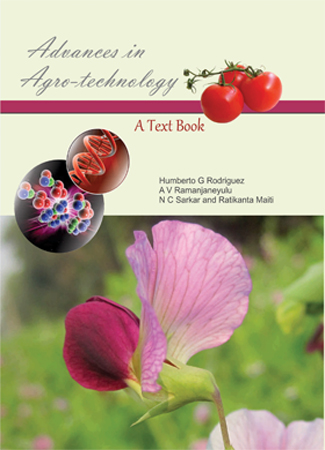
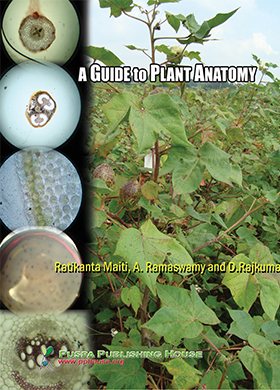
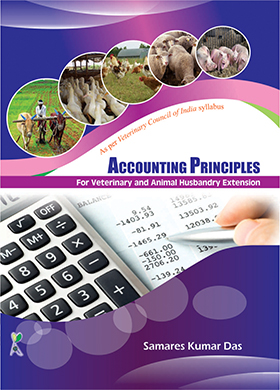
.jpg)
.jpg)


